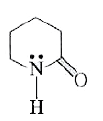Which of the following compounds will reacts with ethanolic KCN ?
Ethyl chloride
Acetyl chloride
Chlorobenzene
Benzaldehyde
The correct Answer is:A, D
To determine which compounds will react with ethanolic KCN, we need to analyze the reactivity of each compound towards nucleophilic substitution reactions. Here’s a step-by-step breakdown:
Step 1: Understand the Reactivity of KCN
Ethanolic KCN (potassium cyanide in ethanol) provides cyanide ions (CN⁻), which act as nucleophiles. Nucleophiles can attack electrophilic centers in molecules, leading to substitution reactions.
Hint: Remember that nucleophiles are attracted to electrophilic centers, which are typically carbon atoms bonded to electronegative atoms.
Step 2: Analyze Each Compound
1. Ethyl Chloride (C2H5Cl):
- Ethyl chloride has a carbon atom bonded to a chlorine atom (C-Cl bond).
- The carbon is electrophilic, and the cyanide ion can attack it, leading to the substitution of the chlorine atom.
- Reaction: C2H5Cl + KCN → C2H5CN + KCl (Nucleophilic substitution occurs).
2. Acetyl Chloride (CH3C(=O)Cl):
- Acetyl chloride has a carbonyl group (C=O) which makes the carbon atom bonded to chlorine highly electrophilic.
- The cyanide ion can attack this carbon, resulting in the substitution of chlorine.
- Reaction: CH3C(=O)Cl + KCN → CH3C(=O)CN + KCl (Nucleophilic substitution occurs).
3. Chlorobenzene (C6H5Cl):
- Chlorobenzene has a chlorine atom bonded to a benzene ring.
- The carbon in chlorobenzene is less electrophilic due to the resonance stabilization of the benzene ring.
- The nucleophilic attack by cyanide is not favorable, and thus no reaction occurs.
- Conclusion: Chlorobenzene does not react with ethanolic KCN.
4. Benzaldehyde (C6H5CHO):
- Benzaldehyde has a carbonyl group (C=O) attached to a benzene ring.
- The carbonyl carbon is electrophilic and can be attacked by the cyanide ion.
- Reaction: C6H5CHO + KCN → C6H5C(OH)(CN) (Nucleophilic addition occurs).
Step 3: Summarize the Results
- Compounds that react with ethanolic KCN:
- Ethyl Chloride (C2H5Cl)
- Acetyl Chloride (CH3C(=O)Cl)
- Benzaldehyde (C6H5CHO)
- Compound that does not react:
- Chlorobenzene (C6H5Cl)
Final Answer
The compounds that will react with ethanolic KCN are Ethyl Chloride, Acetyl Chloride, and Benzaldehyde.
---
Ethanolic KCN (potassium cyanide in ethanol) provides cyanide ions (CN⁻), which act as nucleophiles. Nucleophiles can attack electrophilic centers in molecules, leading to substitution reactions.
1. Ethyl Chloride (C2H5Cl):
- Ethyl chloride has a carbon atom bonded to a chlorine atom (C-Cl bond).
- The carbon is electrophilic, and the cyanide ion can attack it, leading to the substitution of the chlorine atom.
- Reaction: C2H5Cl + KCN → C2H5CN + KCl (Nucleophilic substitution occurs).
- Acetyl chloride has a carbonyl group (C=O) which makes the carbon atom bonded to chlorine highly electrophilic.
- The cyanide ion can attack this carbon, resulting in the substitution of chlorine.
- Reaction: CH3C(=O)Cl + KCN → CH3C(=O)CN + KCl (Nucleophilic substitution occurs).
- Chlorobenzene has a chlorine atom bonded to a benzene ring.
- The carbon in chlorobenzene is less electrophilic due to the resonance stabilization of the benzene ring.
- The nucleophilic attack by cyanide is not favorable, and thus no reaction occurs.
- Conclusion: Chlorobenzene does not react with ethanolic KCN.
- Benzaldehyde has a carbonyl group (C=O) attached to a benzene ring.
- The carbonyl carbon is electrophilic and can be attacked by the cyanide ion.
- Reaction: C6H5CHO + KCN → C6H5C(OH)(CN) (Nucleophilic addition occurs).
- Compounds that react with ethanolic KCN:
- Ethyl Chloride (C2H5Cl)
- Acetyl Chloride (CH3C(=O)Cl)
- Benzaldehyde (C6H5CHO)
- Chlorobenzene (C6H5Cl)
The compounds that will react with ethanolic KCN are Ethyl Chloride, Acetyl Chloride, and Benzaldehyde.
Topper's Solved these Questions
- ALIPHATIC AND AROMATIC ALDEHYDES AND KETONESBOOK - CENGAGE CHEMISTRY ENGLISHCHAPTER - ALIPHATIC AND AROMATIC ALDEHYDES AND KETONESEXERCISE - Archives Fill In Theblanks
2 Videos
- ALIPHATIC AND AROMATIC ALDEHYDES AND KETONESBOOK - CENGAGE CHEMISTRY ENGLISHCHAPTER - ALIPHATIC AND AROMATIC ALDEHYDES AND KETONESEXERCISE - Archives True And False
1 Video
- ALIPHATIC AND AROMATIC ALDEHYDES AND KETONESBOOK - CENGAGE CHEMISTRY ENGLISHCHAPTER - ALIPHATIC AND AROMATIC ALDEHYDES AND KETONESEXERCISE - Archives Objective
10 Videos
- ALCOHOL,PHENOL AND ETHERSBOOK - CENGAGE CHEMISTRY ENGLISHCHAPTER - ALCOHOL,PHENOL AND ETHERSEXERCISE - Archives Analytical And Descriptive
15 Videos
- APPENDIX INORGANIC VOLUME 2BOOK - CENGAGE CHEMISTRY ENGLISHCHAPTER - APPENDIX INORGANIC VOLUME 2EXERCISE - Short Answer Type
179 Videos
Similar Questions
Knowledge Check
Which of the following compounds react with HNO2?
A B
B C
C D
D
Which of the following compounds will react with NaNH2 ?
ACH3−C≡CHB C
C Dph−O∣∣S∣∣O−OH
Dph−O∣∣S∣∣O−OHWhich of the following compounds will react with cyclopentanone to form an enamine?
A B
B C
C D
D
Which of the following compounds will react with sodium hydroxide solution in water ?
View SolutionWhich of the following compound react with B2H6?
View SolutionWhich of the following compounds will react with sodium hydroxide solution in water ?
View SolutionWhich of the following compounds will react with Na to form 4,5-diethyloctane?
View SolutionWhich of the following compounds will react faster than

CH3MgBr?
View Solution